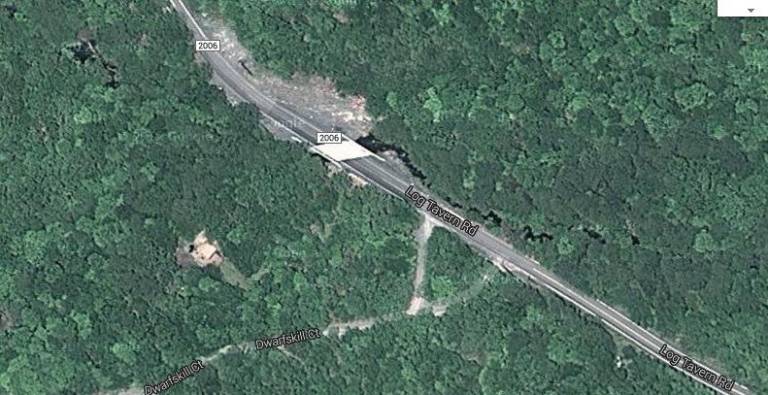Deficient Pike bridges restricted
Thirty-nine deteriorating state-owned bridges in six-county region affected by new restrictions

DINGMANS FERRY — Lower weight restrictions will be posted at four bridges in Pike County to slow their rate of decay and ensure the public’s safety, the Pennsylvania Department of Transportation announced Wednesday
The following is a list of state-owned bridges in Pike that will be posted in coming weeks, along with the new weight restrictions. The list includes combination loads, primarily tractor trailers, which have higher weight limits because of the difference in how their weight is distributed:
Route 2006 (Log Tavern Road) over Dwarfs Kill Creek in Dingman Township 15 tons, or 26 tons for combination loads. Bridge span is 663.6 feet.
Route 4003 (Welcome Lake Road) over Masthope Creek in Lackawaxen Township, 33 tons, or 40 tons for combination loads. Bridge span is 882 feet.
Route 402 over Shohola Creek in Blooming Grove Township, 34 tons, or 40 tons for combination loads. Bridge span is 1,080 feet.
Route 390 over Outlet Fairview in Lake in Palmyra, Township, 22 tons, or 40 tons for combination loads. Bridge span is 696.8 feet.
Thirty-nine state-owned bridges in PennDOT District 4’s six-county region will be posted with new or lowered weight restrictions. They are among about 1,000 structurally deficient bridges statewide that PennDOT Secretary Barry J. Schoch authorized for the new restrictions. The restrictions will also apply on 48 county and locally owned bridges in Lackawanna, Luzerne, Pike, Susquehanna, Wayne, and Wyoming counties (see sidebar for affected bridges in these counties).
Legislative inaction blamed Schoch said PennDOT must take this step "because of legislative inaction this past June on transportation funding, leaving the department’s future resources in question."
He said reducing the weight traveling on these bridges will slow down their deterioration while funding for repairs remains uncertain.
"For months I’ve been explaining to Pennsylvanians and to lawmakers that there are very real consequences to not enacting a transportation funding plan," he said. "Without additional revenues anticipated in the future, I have to make the safe and responsible decision to reduce how much weight is crossing these deteriorating bridges."
National bridge weight-limit posting criteria allow restrictions starting when a bridge’s ability to handle more than 80,000 pounds begins to decline, down to when a bridge has lost half of this ability.
Pennsylvania currently leads the nation in the number of structurally deficient bridges, with 4,479 such bridges.
Pennsylvania ranks 35th in the nation in structurally deficient bridges that are posted or closed. After the new restrictions are put in place, Pennsylvania will rank 27th in the nation.
"In the past we’ve been able to hold off on restricting bridges, but now we have to be more conservative," Schoch said. "We have some of the oldest bridges in the nation and many of them need major repairs. We have a serious funding need and the legislature still has not acted to pass a comprehensive transportation plan. I have to look ahead to the future and preserve these bridges because, without action, we will not have money to invest in them for a long time."
Even if the legislature passes a transportation funding plan in the fall, the earliest the weight restrictions could be removed would be when their repairs can be programmed for funding within two years. If conditions warrant, the restrictions could remain in place until repairs are made.
PennDOT is notifying school-bus operators, emergency-service providers and other local officials.
In May, a study by TRIP, a Washington, D.C.-based national transportation organization, found that the poor shape of Pennsylvania’s roads is taking a huge toll on citizens’ safety, time, and pocketbooks, and threatening the state’s economic future. Traffic fatalities on rural roads are especially high, the study found.
To view the bridges with new or lowered weight restrictions or to learn more about bridge weight restrictions and PennDOT’s bridge-inspection program, visit www.dot.state.pa.us and click on "Bridge Information."